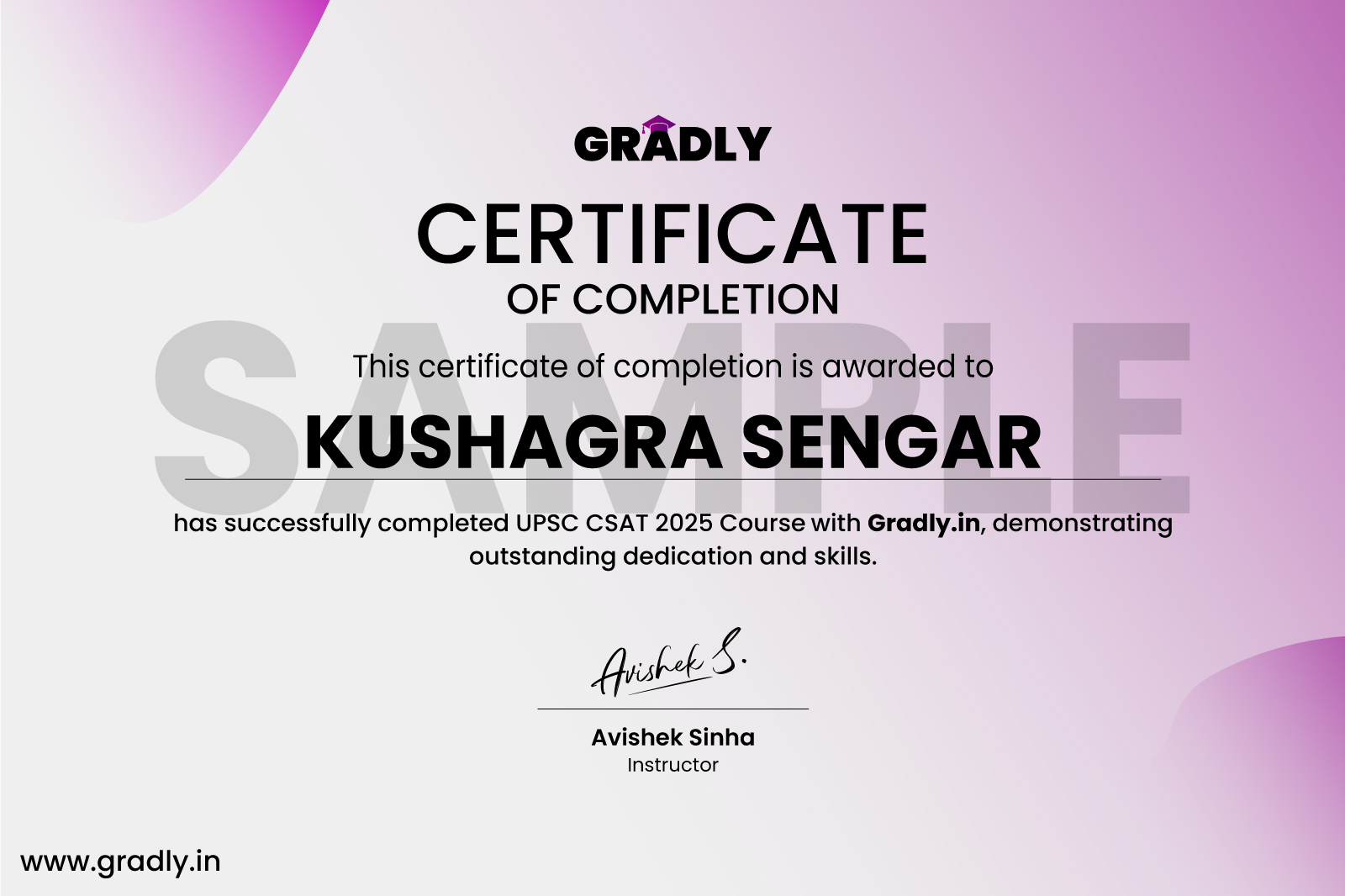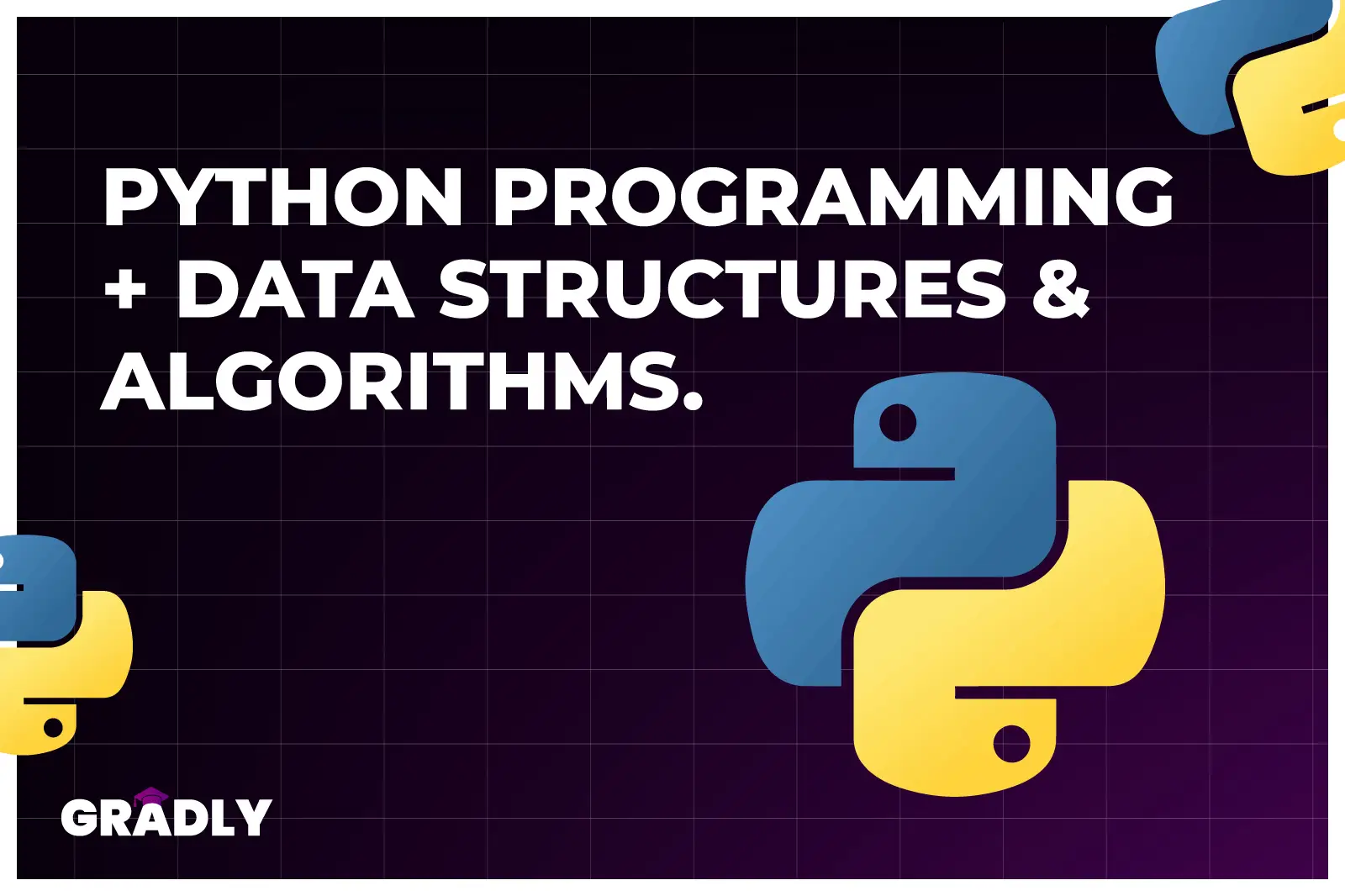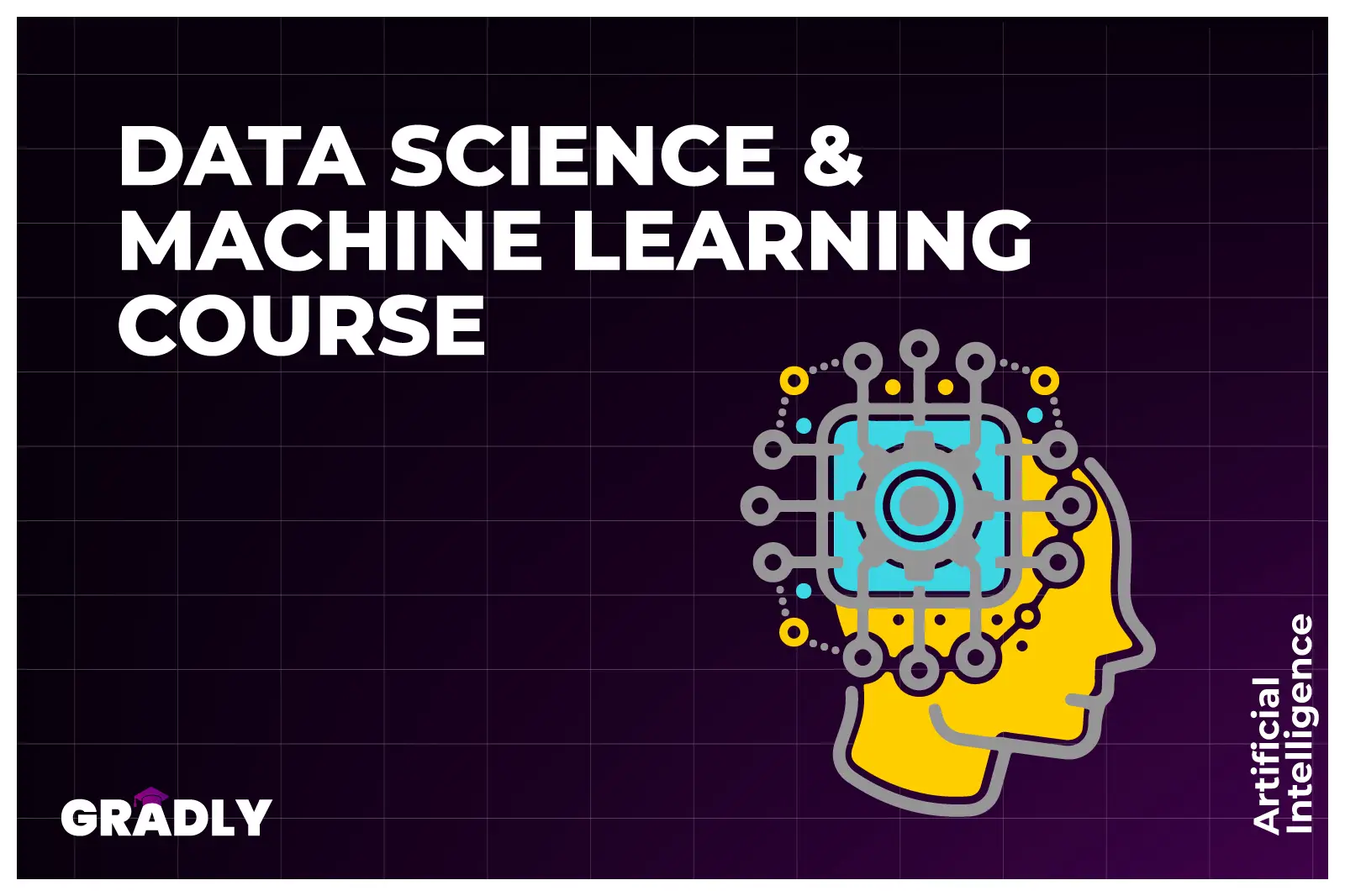Aptitude with avishek sinha
UPSC CSAT 2025
This course enhances analytical, reasoning, and comprehension skills for the Civil Services Preliminary Exam, offering comprehensive study materials and expert guidance.
★★★★★ 5/5
- 172+ students
- Online Live Classes/Access to Recorded Lectures
Descriptions
The UPSC CSAT 2025 course is designed to prepare aspirants for the Civil Services Preliminary Examination. It focuses on developing analytical, logical reasoning, and comprehension skills. The course offers comprehensive study materials, practice tests, and expert guidance, covering quantitative aptitude, logical reasoning, reading comprehension, and decision-making. Flexible scheduling and regular assessments ensure effective preparation. Join us to enhance your skills and excel in the CSAT exam.

Key Points
- Focuses on quantitative aptitude, logical reasoning, reading comprehension, and decision-making.
- Includes lectures and tutorials from experienced educators.
- Offers extensive practice questions, mock tests, and regular assessments to track progress.
- Provides both online and offline classes with flexible timings and recorded sessions.
- Includes detailed study guides, textbooks, and online resources.
- Regular performance analysis and feedback to identify strengths and areas for improvement.
Course Lessons
- Understanding basic concepts of averages.
- Solving problems related to simple and weighted averages.
- Application of averages in various scenarios, including exams and real-life situations.
- Techniques to identify patterns in number series.
- Methods to insert missing characters based on logical sequences.
- Practice problems to enhance pattern recognition skills.
- Fundamentals of percentages and their calculations.
- Solving percentage increase and decrease problems.
- Applications of percentages in profit, loss, and discount scenarios.
- Introduction to Alphabet Series: Identifying patterns and sequences.
- Basic concepts of ratios and proportions.
- Solving problems involving direct and inverse proportions.
- Understanding and solving analogies in logical reasoning.
- Basics of time and work problems.
- Techniques for solving problems involving multiple workers.
- Concepts of efficiency and work rate.
- Solving problems related to filling and emptying of tanks.
- Understanding volume and surface area calculations for cubes and cuboids.
- Concepts of time, speed, and distance relationships.
- Solving problems involving trains, boats, and relative speed.
- Interpreting and solving logical diagrams and flowcharts.
- Understanding the concept of upstream and downstream in boat problems.
- Solving problems related to races and games involving speed and distance.
- Basics of syllogisms: statements, conclusions, and logical deductions.
- Using Venn diagrams to solve complex syllogism problems.
- Techniques to find the unit digit in various arithmetic operations.
- Understanding and applying divisibility rules for different numbers.
- Applying the remainder theorem in problem-solving.
- Calculating the Highest Common Factor (HCF) and Lowest Common Multiple (LCM).
- Understanding factors and multiples of numbers.
- Calculating the number of trailing zeroes in factorials and products.
- Solving calendar-related problems: finding days of the week for given dates.
- Understanding and solving problems involving blood relations and family trees.
- Basic principles of permutations and combinations.
- Solving problems involving arrangements and selections.
- Application of permutations and combinations in probability.
- Introduction to probability and its basic concepts.
- Solving problems involving simple and compound probability.
- Understanding the concepts of time calculation in clocks.
- Solving problems involving angles between clock hands and time intervals.
- Techniques for effective reading and comprehension.
- Solving passage-based questions with inference and conclusion drawing.
- Enhancing speed and accuracy in reading comprehension.
- Solving problems involving direction sense and movement.
- Understanding and solving problems related to dice and their orientations.
- Techniques for coding and decoding messages.
- Solving problems related to order, ranking, and sequence.
- Understanding different types of seating arrangement problems.
- Solving problems to determine the sufficiency of given data to answer questions.
- Applying the alligation method in problems involving mixtures.
- Solving problems related to the composition of mixtures.
- Basics of set theory and solving problems involving sets.
- Understanding and solving problems involving surds and indices.
- Identifying patterns in numerical and alphabetical series.
- Solving various types of logical and analytical puzzles.
- Calculating profit, loss, and discount in commercial math problems.
- Understanding and solving problems involving simple interest (SI) and compound interest (CI).
Instructor

Mr. Avishek Sinha
Instructor
This course includes:
- 100 hours on-demand Live Classes
- 12 month access
- Access on mobile, Tablet and Laptop
- 1:1 mentorship support
- Certificate of completion




